astronaut
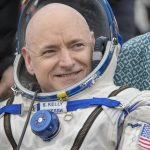 I’ve often thought, upon waking from a sleeping position that my body didn’t particularly like, that it would be wonderful to sleep in an anti-gravity machine. Maybe I would sleep better, and maybe I wouldn’t, but the reality is that it’s quite probable that man was not really intended for long periods of anti-gravity. While a few hours of blissful sleep, followed by no aches and pains from pillow or mattress, might be something wonderful to experience, I can fully see, after reading about the astronaut, Scott Kelly, who at least for a time spent the longest number of consecutive days at the International Space Station, in a state of anti-gravity. That number was 340 days.
I’ve often thought, upon waking from a sleeping position that my body didn’t particularly like, that it would be wonderful to sleep in an anti-gravity machine. Maybe I would sleep better, and maybe I wouldn’t, but the reality is that it’s quite probable that man was not really intended for long periods of anti-gravity. While a few hours of blissful sleep, followed by no aches and pains from pillow or mattress, might be something wonderful to experience, I can fully see, after reading about the astronaut, Scott Kelly, who at least for a time spent the longest number of consecutive days at the International Space Station, in a state of anti-gravity. That number was 340 days.
My first thought was of how gentle that must have been to his body, and maybe I would be right, but at some point, Kelly had to return to Earth. The experiment that he was a part of was over. The idea was to learn what the effects on the human body were in a prolonged state of 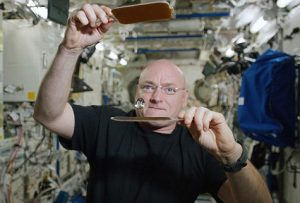 anti-gravity. It really hadn’t occurred to me that there might be any adverse effects, but apparently I would have been wrong. Among the complaints Kelly spoke of, one of the worst was a burning rash all over his skin. I wondered what might have caused that. The answer amazed me. The rash appeared on his back, legs, arm, and anywhere else where his body has touched the bed he now sleeps in. Not only is there a rash, but it is inflamed, feeling hot to the touch. Okay, my body may not like my mattress and pillow all the time, but it doesn’t give me a burning rash, so maybe it’s not so bad after all, and since I only occasionally wake up achy from my night’s sleep, I’ll deal with it.
anti-gravity. It really hadn’t occurred to me that there might be any adverse effects, but apparently I would have been wrong. Among the complaints Kelly spoke of, one of the worst was a burning rash all over his skin. I wondered what might have caused that. The answer amazed me. The rash appeared on his back, legs, arm, and anywhere else where his body has touched the bed he now sleeps in. Not only is there a rash, but it is inflamed, feeling hot to the touch. Okay, my body may not like my mattress and pillow all the time, but it doesn’t give me a burning rash, so maybe it’s not so bad after all, and since I only occasionally wake up achy from my night’s sleep, I’ll deal with it.
Among the other complaints Kelly suffered, were feelings of nausea (possibly a vertigo type of an issue), a  stumbling gait from legs that are not used to gravity (Kelly’s vestibular system was trying to readjust to Earth’s gravity…like learning to walk all over again), an altered sense of gravity (waking up feeling like he is upside down), muscle atrophy from muscles that weren’t used, an all-over body ache from the pressures of gravity, and a constant grogginess, just to name a few. Of course, short -term anti-gravity such as I would experience by sleeping in an anti-gravity machine, would be very unlikely to produce any adverse conditions, like prolonged anti-gravity did in Kelly. Nevertheless, because our bodies are designed to work with gravity, I suppose my sleep idea is not such a good idea after all. At least, I don’t think it is one that I am willing to take a chance on.
stumbling gait from legs that are not used to gravity (Kelly’s vestibular system was trying to readjust to Earth’s gravity…like learning to walk all over again), an altered sense of gravity (waking up feeling like he is upside down), muscle atrophy from muscles that weren’t used, an all-over body ache from the pressures of gravity, and a constant grogginess, just to name a few. Of course, short -term anti-gravity such as I would experience by sleeping in an anti-gravity machine, would be very unlikely to produce any adverse conditions, like prolonged anti-gravity did in Kelly. Nevertheless, because our bodies are designed to work with gravity, I suppose my sleep idea is not such a good idea after all. At least, I don’t think it is one that I am willing to take a chance on.
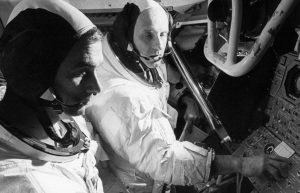 They were a part of an elite group…the men who walked on the moon. They had the privilege of going somewhere that few humans would get to go. It was a small group of just twelve men, but only three of the twelve got to walk on the moon twice, and only Captain Gene Cernan got to be the last human being to leave a footprint on the lunar surface. The final words he spoke on the Moon on December 14, 1972 represented everything the Apollo missions stood for. He said, “We leave as we came and, God willing, as we shall return with peace and hope for all mankind.”
They were a part of an elite group…the men who walked on the moon. They had the privilege of going somewhere that few humans would get to go. It was a small group of just twelve men, but only three of the twelve got to walk on the moon twice, and only Captain Gene Cernan got to be the last human being to leave a footprint on the lunar surface. The final words he spoke on the Moon on December 14, 1972 represented everything the Apollo missions stood for. He said, “We leave as we came and, God willing, as we shall return with peace and hope for all mankind.”
Captain Gene Cernan was the third man to walk in space, one of only three people to go to the Moon twice and the last man to leave a footprint on the lunar surface…the last one!! How amazing is that? Some things are almost to big to imagine, and walking on the moon is one of them for me. The really shocking thing for me is that the last man walked on the moon 45 years ago today…and no human has been there since that day. I wonder how much Captain Cernan has thought about that fact over the last 45 years. I’m sure he has had to tell people about it more times that he  can count, too. I suppose it would be strange to have your whole identity to the world be that you were the last man to set foot on the moon, but then again, I think it might be extremely cool too. Now, consider what his wife was thinking those two times her husband was in space and walking on the moon. Well, she has been quoted as saying, “If you think going to the Moon is hard, you should try staying at home.” Yes, I imagine that would be a tough job too, especially after Apollo 13 almost didn’t make it back to Earth.
can count, too. I suppose it would be strange to have your whole identity to the world be that you were the last man to set foot on the moon, but then again, I think it might be extremely cool too. Now, consider what his wife was thinking those two times her husband was in space and walking on the moon. Well, she has been quoted as saying, “If you think going to the Moon is hard, you should try staying at home.” Yes, I imagine that would be a tough job too, especially after Apollo 13 almost didn’t make it back to Earth.
As for Cernan, he has been said to be sad that the American space program has dwindled into nothing. All the hard work they had done, and all the accomplishments, now seemingly not important. He was quoted as saying, “It was if someone took Columbus’ Santa Maria and said: It’s history – you guys discovered America, let’s take it out and scuttle it. It’s over, you’re not going to go anywhere. To think of what we were capable of doing and now we’ve been told [in a tweet by Russia’s Deputy Prime Minister Dmitry Rogozin] that if we want to go to our own space station, we’d better get a trampoline – that statement hurt. It hurt me personally.” Yes, 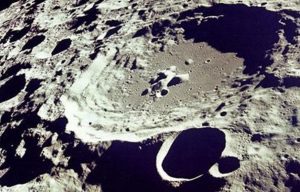 it hurts me too, and I have never been to the moon. So how much did it hurt for those twelve men who walked on the moon…Neil Armstrong – Apollo 11 July 21, 1969, Buzz Aldrin -Apollo 11 July 21st, 1969, Pete Conrad – Apollo 12 November 19-20, 1969, Alan Bean – Apollo 12 November 19-20, 1969, Alan Shepard – Apollo 14 February 5-6, 1971, Edgar Mitchell – Apollo 14 February 5-6, 1971, David Scott – Apollo 15 July 31 August 2, 1971, James Irwin – Apollo 15 July 31 August 2, 1971, John W. Young – Apollo 16 April 21st to 23rd, 1972, Charles Duke – Apollo 16 April 21-23, 1972, Harrison Schmitt – Apollo 17 December 11-14, 1972, and lastly Eugene Cernan – Apollo 17 December 11-14, 1972. It’s like having your life’s work thrown away.
it hurts me too, and I have never been to the moon. So how much did it hurt for those twelve men who walked on the moon…Neil Armstrong – Apollo 11 July 21, 1969, Buzz Aldrin -Apollo 11 July 21st, 1969, Pete Conrad – Apollo 12 November 19-20, 1969, Alan Bean – Apollo 12 November 19-20, 1969, Alan Shepard – Apollo 14 February 5-6, 1971, Edgar Mitchell – Apollo 14 February 5-6, 1971, David Scott – Apollo 15 July 31 August 2, 1971, James Irwin – Apollo 15 July 31 August 2, 1971, John W. Young – Apollo 16 April 21st to 23rd, 1972, Charles Duke – Apollo 16 April 21-23, 1972, Harrison Schmitt – Apollo 17 December 11-14, 1972, and lastly Eugene Cernan – Apollo 17 December 11-14, 1972. It’s like having your life’s work thrown away.

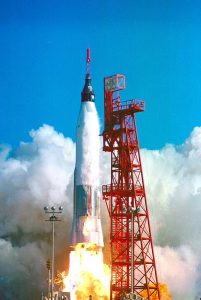 I’m sure that many of you remember the movie, Deep Impact, which was about a group of astronauts trying to save the world by deflecting a meteor, so it wouldn’t hit the earth. Robert Duvall played the part of Captain Spurgeon “Fish” Tanner, a retired, and largely considered by the rest of the crew, an “over the hill” astronaut. Nevertheless, in the end, they were glad they had him when it came to completing their mission, even though it did cost them their lives. Of course, the movie was fictional, and not realistic in many aspects, but the part that struck me as cool, was that the retired astronaut got a second chance to be useful in an important mission.
I’m sure that many of you remember the movie, Deep Impact, which was about a group of astronauts trying to save the world by deflecting a meteor, so it wouldn’t hit the earth. Robert Duvall played the part of Captain Spurgeon “Fish” Tanner, a retired, and largely considered by the rest of the crew, an “over the hill” astronaut. Nevertheless, in the end, they were glad they had him when it came to completing their mission, even though it did cost them their lives. Of course, the movie was fictional, and not realistic in many aspects, but the part that struck me as cool, was that the retired astronaut got a second chance to be useful in an important mission.
However, Captain Spurgeon Tanner wasn’t the only retired astronaut to get a second chance to go into space. On October 29, 1998, nearly four decades after he became the first American to orbit the Earth, Senator John Hershel Glenn Jr was launched into space again as a payload specialist aboard the space shuttle Discovery. At 77 years of age, Glenn was the oldest human ever to travel in space. During the nine day mission, he served as part of a NASA study on health problems associated with aging. Like our fictional Captain Spurgeon Tanner, Senator John Glenn was useful in space again. He had something that the other astronauts didn’t have…age. I don’t suppose that the studies done on John Glenn were the saving the world type, but they were real life studies, and that’s important too.
John Glenn became famous when he was chosen by NASA in 1959, along with six other men, to be the first American astronauts. He was a lieutenant colonel in the US Marine Corps. A decorated pilot, he flew nearly 150 combat missions during World War II and the Korean War. In 1957, he made the first nonstop supersonic flight across the United States, flying from Los Angeles to New York in three hours and 23 minutes. Then, in April 1961, the American space program suffered a setback of sorts, when Soviet cosmonaut Yuri Gagarin became the first man in space, and his spacecraft, Vostok 1, made a full orbit before returning to Earth. It was a feat that the United States had hoped to achieve first. The United States kicked things into high gear, and less than one month later, American Alan Shepard Jr became the first American in space when his Freedom 7 spacecraft was launched on a suborbital flight. American “Gus” Grissom made another suborbital flight in July. Then, in August, Soviet cosmonaut Gherman Titov spent more than 25 hours in space aboard Vostok 2, making 17 orbits. As a technological power, the United States looked second-rate, compared with its Cold War adversary.
If the Americans wanted to dispel this notion, they needed a multi-orbital flight before another Soviet space advance arrived. On February 20, 1962, NASA and Colonel John Glenn accomplished this feat with the flight of Friendship 7, a spacecraft that made three orbits of the Earth in five hours. Glenn was hailed as a national hero, and on February 23 President John F. Kennedy visited him at Cape Canaveral. Glenn later addressed Congress and was given a ticker-tape parade in New York City. It was at this point that NASA made the unfortunate decision not to risk the life of the now famous Glenn by sending him into space again. NASA essentially grounded the “Clean Marine” in the years after his historic flight. Frustrated with this uncharacteristic lack of activity, Glenn turned to politics, In 1964, he announced his candidacy for the US Senate from his home state of Ohio and formally left NASA. Later that year, however, he withdrew his Senate bid after seriously injuring his inner ear in a fall from a horse. In 1970, following a stint as a Royal Crown Cola executive, he ran for the Senate again but lost the Democratic nomination to Howard Metzenbaum. Four years later, he defeated Metzenbaum, won the general election, and went on to win re-election three times. In 1984, he unsuccessfully sought the Democratic nomination for president.
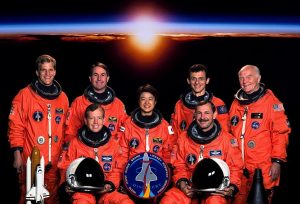
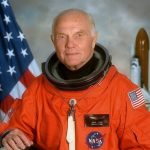
His really big claim to fame would once again come from NASA, which seemed to be his destiny after all. In 1998, Glenn attracted considerable media attention when he returned to space aboard the space shuttle Discovery. In 1999, he retired from his US Senate seat after four consecutive terms in office, a record for the state of Ohio. While his years in politics were much longer, he will always be remembered for the two historic flights he made into space.

